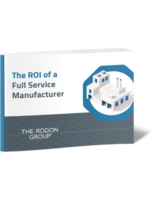DC to DC Power Supplies (Converters)
Intermediate Bus DC/DC Converters deliver 96% peak efficiency.
Press Release Summary:
Based on digital core controller with embedded efficiency optimizer algorithm, Models BMR453 and BMR454 are factory-programmed for any output voltage from 5-13 V. Quarter-brick Model BMR453 offers up to 396 W output power, while eighth-brick Model BMR454 delivers up to 240 W. Industry-standard 5-pin compatibility facilitates migration from static intermediate bus architectures to advanced topologies such as Dynamic Bus Voltage.
Original Press Release:
Ericsson Energy-Optimized, Intermediate Bus DC/DC Converters Offer Unprecedented Efficiency Across a Wide Load Range
o Integral energy optimization algorithm for 96% peak efficiency and substantially flat curve from 15% to 100% load
o Footprint 100% compatible with "Five-pin" intermediate bus converters in existing designs
o Tightly regulated output voltage
o Based on a proven family of digitally-controlled DC/DC converters launched in 2008
Based on a digital core controller embedding an Ericsson efficiency optimizer algorithm, and fully compliant with the "Five-pin" de-facto industry standard for intermediate bus converters (IBC), Ericsson Power Modules introduces a series of variants to its BMR453 and BMR454 DC/DC converters. The latest versions omit the digital interfaces found in early models, simplifying system design. Ericsson programs the modules in its factory for any output voltage from 5V to 13V. This, together with the energy optimization algorithm, ensures that the modules operate with the highest possible efficiency over wide-ranging load conditions. The result is lowest power dissipation, lowest temperature operation, highest reliability and maximum energy saving.
With 96.5% peak efficiency and a substantially flat efficiency curve from 15% to 100% load, the quarter-brick BMR453 offers up to 396W output power (or up to 33A) and the eighth-brick BMR454 offers up to 240W (or up to 20A).
Industry-standard "Five-pin" compatibility simplifies migration from static intermediate bus architectures to more advanced topologies such as Dynamic Bus Voltage, which the latest versions of BMR453 and BM454 accommodate through their digital interface.
All BMR453 and BMR454 converters meet the insulation requirements of EN60950 and come complete with vital protection features (over-temperature, over current and over-voltage) and standard 9V or 12V output voltages.
The first versions of these products were launched in 2008. They created a new industry platform, embedding a digital core controller to deliver unprecedented levels of flexibility and efficiency via digital control and power-management.
Since the late 1990s, the Information and Communication Technology (ICT) industry has adopted a power architecture based on a main DC/DC converter powering a range of point-of-loads converters. Depending on segment and power-range, this technology, known as the Intermediate Bus Architecture (IBC), has used a variety of DC/DC converters. The demand trend is for products that offer increasing functionality, shorter time-to-market and reduced energy consumption. Today, the technology requires the use of optimized intermediate bus voltages so that power-modules perform with high efficiency throughout their operating range, from low load to full load.
In OEM quantities, the 396W BMR463 "Five-pin" is priced at $47.50 and the 240W BMR454 "Five-pin" is priced at $36.
FOR FURTHER INFORMATION, PLEASE CONTACT
Patrick Le Fèvre, Marketing and Communication Director Ericsson Power Modules
Phone: +46-10-716 95 07
Europe: +46-10-716 96 20
U.S.A.: +1-972-583 6910/5254
China: + 86-21-5990 3258
About Ericsson Power Modules
www.ericsson.com/powermodules




